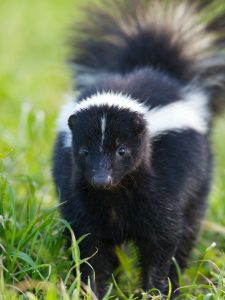Bats are under the radar of many people. They aren’t really thought to be ‘pests.’ We don’t usually think about bats in terms of what they eat, but it needs to be considered when you have a bat problem.
Bats as pests
Bats are nocturnal, so finding a bat problem can be difficult. Even if you know that bats live on your property, it may take some time to find out what type of bat is in your home. Several different types of bats live in the US. Bats have a home base called their “roost.” The size of this roost varies from bat to bat. Bats who live in larger roosts tend to be more aggressive than those occupying smaller spaces with less room to navigate. If a bat lives in an attic, you’ll need to know what type of bat it is. Some feed on insects and others survive on nectar and pollen. While some species eat only one kind of insect or plant, others are generalists who will eat any food they come across for survival.
Bat removal methods
Bats are essential to our environment. They help control insect numbers and pollinate plants. However, they can also be a nuisance. If you have bats in your home, it’s crucial to get rid of them as soon as possible. There are many different ways to do this, but you need to ensure that you’re using the correct method for your particular situation and humanely remove the bats without killing them.
One way to get rid of bats is to use a bat house. That is a structure that resembles a small cottage or cabin. It has several chambers that bats can enter and roost in. Once the bats are inside, the door is closed, and the bats are trapped. You should then relocate the bat house near a spot where bats are known to roost.
Another way to get rid of bats is to use a bat exclusion device. This one-way door allows the bats to exit the roost but not re-enter. The device is placed over the entrance to the nest. Once the bats have left, the device is removed, and the opening is sealed. This second option is less favorable because it can be challenging for the bats to relocate to another area.
A bat’s diet
Bats play a vital role as part-time predators/eaters and part-time pollinators during the night hours. While most bats eat insects or pollen and nectar of plants, another type of bat is quite famous for its diet. We probably all heard about it at one point or the other. The bat we are talking about is the vampire bat. So, what are vampire bats, and what do they eat?
Vampire bats
Vampire bats are a type of bat that lives in Central and South America. These bats are unique in that they feed primarily on blood. While other types of bats may eat small amounts of blood, vampire bats are the only known species to subsist almost entirely on a diet of blood.
There are three different species of vampire bats, all of which have slightly different feeding habits. The common vampire bat feeds on the blood of mammals, while the hairy-legged vampire bat feeds primarily on birds. The white-winged vampire bat has a more varied diet and will feed on mammals and birds both.
Vampire bats typically find their prey by following them back to their roosts. Once they locate a potential victim, they will land nearby and approach it quietly. Vampire bats have sharp teeth and a strong bite, which they use to puncture the skin of their prey. They then lick up the blood that oozes from the wound. What makes them dangerous to other animals’ health isn’t the blood they consume but that they might carry rabies! Whereas many bats are benign, these bats with rabies can spread it to both people and pets.
A vampire bat can consume about half its body weight in blood each night. This amount of blood is enough to keep the bat well-nourished and healthy. If a vampire bat does not feed for several days, it will become weak and may even die. Vampire bats are fascinating creatures that have captivated people’s imaginations for centuries. These unusual animals play an important role in their ecosystem by helping to control the population of their prey. While some people may fear them, vampire bats play a vital part in the natural world and deserve our protection as other bats do too.






